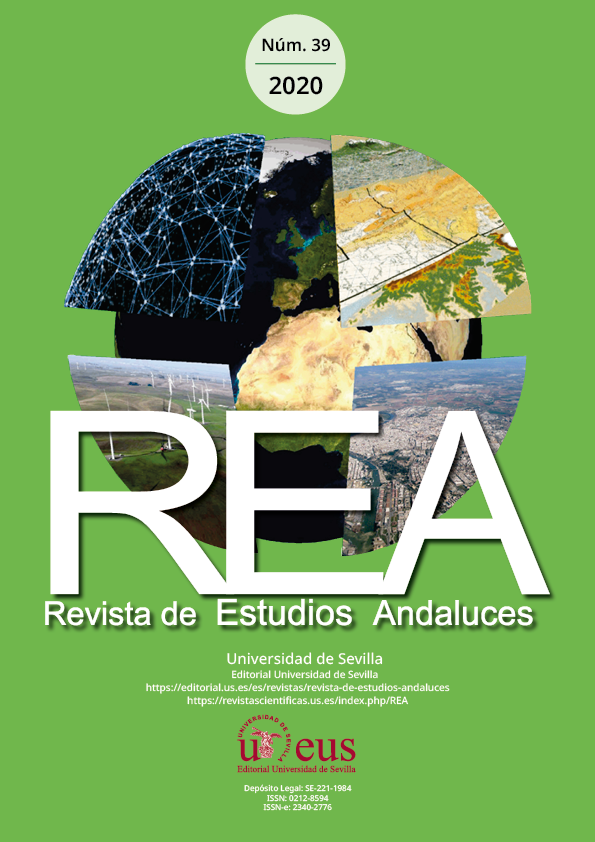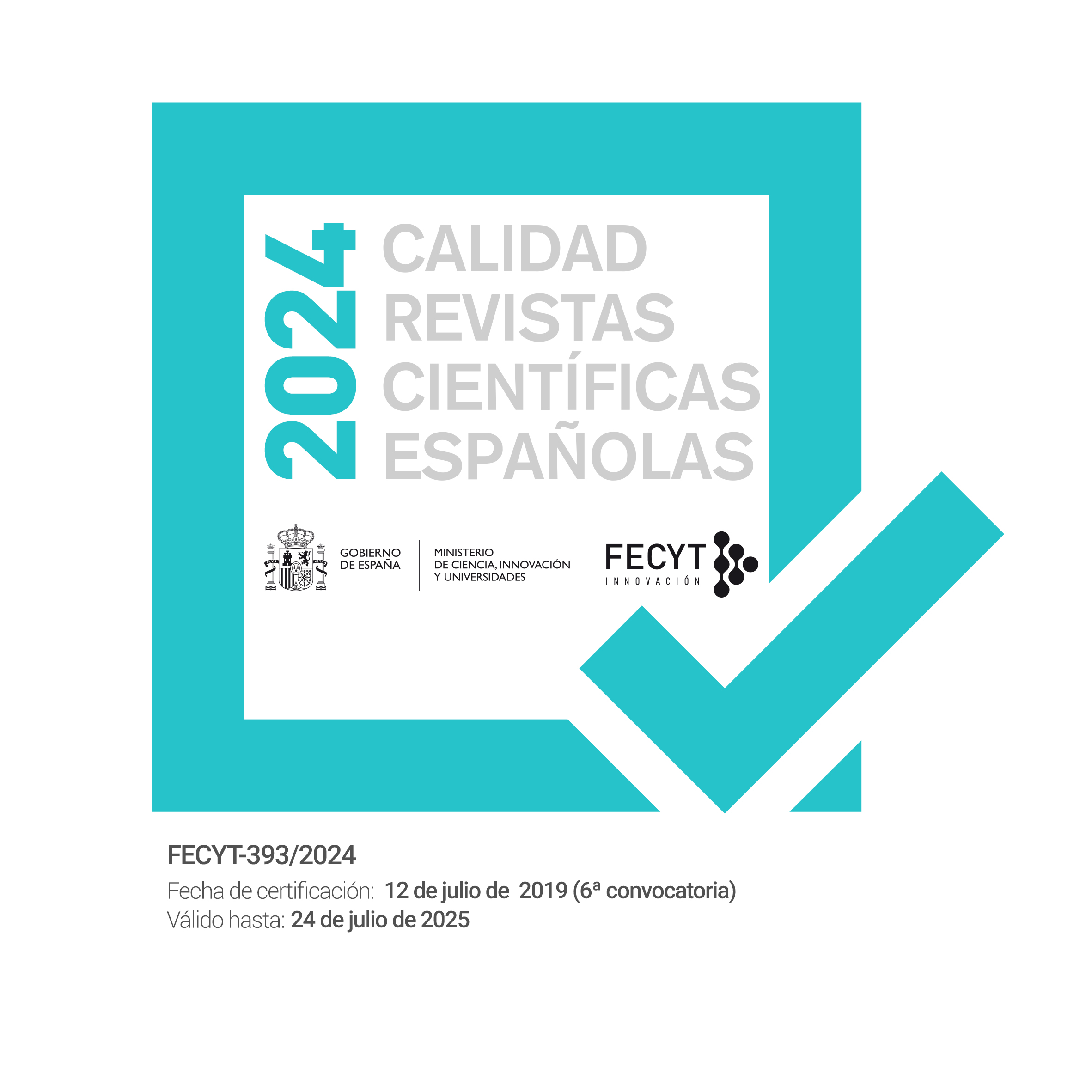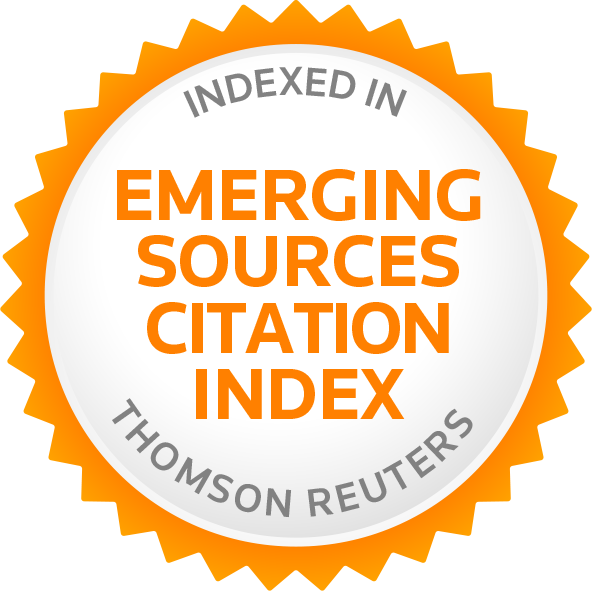Blue Spaces as Resources for Health and Wellbeing: Survey Comparisons of Indoor and Outdoor Settings from Ireland
DOI:
https://doi.org/10.12795/rea.2020.i39.01Palabras clave:
salud, bienestar, espacio azul, canales, playas, piscinasResumen
En los últimos años se ha producido un aumento del interés en espacios azules, especialmente evidente en la investigación basada en la naturaleza asociada con el potencial de las aguas oceánicas, costeras e interiores para mejorar la salud y el bienestar. Este artículo aborda estudios irlandeses que comparan espacios azules interiores y exteriores para comunidades de usuarios y prácticas diferentes. Los estudios emplean metodologías cualitativas que incluyen entrevistas, observación y visitas, para llevar a cabo una especie de ‘captura de sitio’ en tres diferentes tipos de espacio azul. El primer estudio, realizado en una piscina cubierta en Dublín Oeste, identifica los beneficios y el valor de la natación como práctica saludable, de tres diferentes cohortes de población encuestada (n=79). El segundo estudio, de un único espacio de un canal en las Midlands, analiza los beneficios identificados por usuarios habituales mixtos, incluidos Park Runners (corredores de parque), de los blue-ways(vías azules) al lado del Canal Real (n=12). Un tercer estudio, recoge las opiniones de los usuarios in situ de dos espacios azules muy diferentes, el canal y la playa, en el centro y sur de Dublín (n=8). Lo que se desprende de estas investigaciones son complejos grupos de resultados terapéuticos identificados tanto en términos de salud como de bienestar, que reflejan las diversas perspectivas/valoraciones de los usuarios de los diferentes tipos de espacios azules. Así, este trabajo recoge aportaciones a la literatura científica sobre la identificación de las dimensiones de la promoción de la salud y de la reducción de la misma atendiendo al nivel de la utilización de los espacios azules, así como los puntos comunes y las variaciones en la forma en que los usuarios valoran explícitamente los espacios azules. Temas claves adicionales que subyacen en este trabajo hacen referencia además al autodescubrimiento, la socialización y la recuperación como elementos que permitan entrever el potencial de estudios cualitativos que se dirijan a las comunidades azules de usuarios de un lugar, con la finalidad de sustentar e informar a la política de salud pública y promover la resiliencia de la salud tanto en Irlanda, como en otros países
Descargas
Citas
Amoly, E., Dadvand, P., Forns, J., López-Vicente, M., Basagaña, X., Julvez, J. … & Sunyer, J. (2014). Green and Blue Spaces and Behavioral Development in Barcelona Schoolchildren: The BREATHE Project. Environmental Health Perspectives, 122(12), 1351-58. doi: https://doi.org/10.1289/ehp.1408215.
Ashbullby, K. J., Pahl, S., Webley, P. & White, M. (2013). The beach as a setting for families’ health promotion: A qualitative study with parents and children living in coastal regions in southwest England. Health & Place, 23, 138–147. doi: https://doi.org/10.1016/j.healthplace.2013.06.005.
Bell, S. L., Phoenix, C., Lovell, R. & Wheeler, B. W. (2015). Seeking everyday wellbeing: The coast as a therapeutic landscape. Social Science and Medicine, 142, 56–67. doi: https://doi.org/10.1016/j.socscimed.2015.08.011.
Bell, S, Wheeler, B.W. & Phoenix, C. (2017). Using Geonarratives to Explore the Diverse Temporalities of Therapeutic Landscapes: Perspectives from ‘Green’ and ‘Blue’ Settings. Annals of the American Association of Geographers, 107, 93-108. doi: https://doi.org/10.1080/24694452.2016.1218269.
Bell, S., Foley, R., Houghton, F., Maddrell, A. & Williams, A. (2018). From therapeutic landscapes to healthy spaces, places and practices: A scoping review. Social Science & Medicine, 196, 123-130. doi: https://doi.org/10.1016/j.socscimed.2017.11.035.
Bell, S. L., Leyshon, C., & Phoenix, C. (2019). Negotiating nature’s weather worlds in the context of life with sight impairment. Transactions of the Institute of British Geographers, 44(2), 270-283. doi: https://doi.org/10.1111/tran.12285.
Britton, E., Kindermann, G., Domegan, D. & Carlin. C. (2018). Blue care: a systematic review of blue space interventions for health and wellbeing. Health Promotion International. doi: https://doi.org/10.1093/heapro/day103.
Brown, M. (2019). Sailing, health and wellbeing: a thalassographic perspective. In, Foley, R., Kearns, R., Kistemann, T. & Wheeler, B., (eds), Blue Space, Health and Wellbeing: Hydrophilia Unbounded (pp. 52-64). Abingdon: Routledge. doi: https://doi.org/10.4324/9780815359159-4.
Brown, M. & Humberstone, B. (eds) (2015). Seascapes: Shaped by the Sea. Farnham, Ashgate. doi: https://doi.org/10.4324/9781315607931.
Calogiuri, G. & Chroni, S. (2014). The impact of the natural environment on the promotion of active living: An integrative systematic review. BMC Public Health, 14, 873. doi: https://doi.org/10.1186/1471-2458-14-873.
Duff, C. (2011). Networks, resources and agencies: On the character and production of enabling places. Health & Place, 17, 149–156. doi: https://doi.org/10.1016/j.healthplace.2010.09.012.
Evers, C. (2015). Researching action sport with a GoPro TM camera: An embodied and emotional mobile video tale of the sea, masculinity and men-who-surf. In I. Willard (Ed), Researching embodied sport: Exploring movement cultures (pp. 145-163). Abingdon: Routledge. doi: https://doi.org/10.4324/9781315761121-12.
Foley, R. & Kistemann, T. (2015). Blue Space Geographies: Enabling Health in Place. Introduction to Special Issue on Healthy Blue Space Health & Place, 35, 157-165. doi: https://doi.org/10.1016/j.healthplace.2015.07.003.
Foley, R. (2017). Swimming as an accretive practice in healthy blue space. Emotion, Space and Society, 22, 43-51. doi: https://doi.org/10.1016/j.emospa.2016.12.001.
Foley, R. (2018a). Mapping a blue trace: an intermittent swimming life. In Roberts, L. & Phillips, K. (eds) Water, Creativity and Meaning: Multidisciplinary understandings of human-water relationships (87-102). Abingdon: Routledge. doi: https://doi.org/10.4324/9781315110356-6.
Foley, R. (2018b). Palettes of place: green/blue spaces and health. In, Crooks, V., Andrews, G & Pearce, J., Routledge Handbook of Health Geography (pp. 251-258). Oxford: Routledge. doi: https://doi.org/10.4324/9781315104584-36.
Foley, R., Kearns, R., Kistemann, T. & Wheeler, B. (Eds) (2019). Blue Space, Health and Wellbeing: Hydrophilia Unbounded. Abingdon: Routledge. doi: https://doi.org/10.4324/9780815359159.
Frumkin, H. (2003). Healthy Places: Exploring the Evidence. American Journal of Public Health, 93(9), 1451–1456. doi: https://doi.org/10.2105/AJPH.93.9.1451.
Garrido-Cumbrera, M., Gálvez-Ruiz, D., Braçe, O. & López-Lara, E. (2018). Exploring the Association between Urban Sprawl and Mental Health. Journal of Transport & Health ,10, 381–90. doi: https://doi.org/10.1016/j.jth.2018.06.006.
Gascon, M., Zijlema, W., Vert, C., White, M.P. and Nieuwenhuijsen, M. (2017). Outdoor blue spaces, human health and well-being: A systematic review of quantitative studies. International Journal of Hygiene and Environmental Health, 220 (8), 1207-1221. doi: https://doi.org/10.1016/j.ijheh.2017.08.004.
Garrett, J., White, M.P., Huang, J., Ng, S., Hui, Z., Leung, C. … & Wong, M. (2019). Urban blue space and health and wellbeing in Hong Kong: Results from a survey of older adults. Health & Place, 55, 100-110. doi: https://doi.org/10.1016/j.healthplace.2018.11.003.
Gesler, W. (2003). Healing Places. Maryland, Rowman & Littlefield.
Gidlow, C.J., Jones, M., Hurst , G., Masterson, D, Clark-Carter, D., ,Tarvainen M., Smith, G. & Nieuwenhuijsen, M. (2016). Where to put your best foot forward: Psycho-physiological responses to walking in natural and urban environments. Journal of Environmental Psychology, 45, 22-29. doi : https://doi.org/10.1016/j.jenvp.2015.11.003.
Grellier, M., White M., Albin, M., Bell, S., Elliott, .L.R., Gascon, M. ... & Fleming, L. (2017). BlueHealth: a study programme protocol for mapping and quantifying the potential benefits to public health and well-being from Europe’s blue spaces. BMJ Open 7, e016188. doi: https://doi.org/10.1136/bmjopen-2017-016188.
Grunseit, A., Richards, J. & Merom, D. (2018). Running on a high: parkrun and personal well-being. BMC Public Health 18. doi: https://doi.org/10.1186/s12889-017-4620-1.
Korpela, K., Borodulin, K., Neuvonen, M., Paronen, O. and Tyrväinen, L. (2014). Analyzing the mediators between nature-based outdoor recreation and emotional well-being. Journal of Environmental Psychology, 37, 1-7. doi: https://doi.org/10.1016/j.jenvp.2013.11.003.
Linton, M-J., Dieppe, P. & Medina-Lara, A. (2016). Review of 99 self-report measures for assessing wellbeing in adults: exploring dimensions of well-being and developments over time. BMJ Open 6. doi: https://doi.org/10.1136/bmjopen-2015-010641.
Macpherson, H. (2010). Non-representational approaches to body-landscape relations. Geography Compass, 4, 1, 1-13. doi : https://doi.org/10.1111/j.1749-8198.2009.00276.x.
McLauchlan, A. (2017). Geographies of Swimming Pool Provision: Lessons from Glasgow 1804–2014. Scottish Geographical Journal, 133:2, 83-100. doi: https://doi.org/10.1080/14702541.2017.1285042.
Mitchell, R. (2013). Is physical activity in natural environments better for mental health than physical activity in other environments? Social Science and Medicine, 91, 130-134. doi: https://doi.org/10.1016/j.socscimed.2012.04.012.
Morris, P. & Scott, H. (2018). Not just a run in the park: a qualitative exploration of parkrun and mental health, Advances in Mental Health. doi: https://doi.org/10.1080/18387357.2018.1509011.
Mutz, M. & Müller, J. (2016). Mental health benefits of outdoor adventures: Results from two pilot studies. Journal of Adolescence, 49, 105-114. doi: https://doi.org/10.1016/j.adolescence.2016.03.009.
Pitt, H. (2018). Muddying the waters: What urban waterways reveal about bluespaces and wellbeing. Geoforum, 92, 161-170. doi: https://doi.org/10.1016/j.geoforum.2018.04.014.
Söderström, O., Abrahamyan-Empson, L., Codeluppi, Z., Söderström, D., Baumann, P. & Conus, P. (2016). Unpacking ‘the City’: An experience-based approach to the role of urban living in psychosis. Health & Place, 42, 104–110. doi: https://doi.org/10.1016/j.healthplace.2016.09.002.
Spinney, J. (2015). Close encounters? Mobile methods, (post)phenomenology and affect. Cultural Geographies, 22, 2, 231-46. doi: https://doi.org/10.1177/1474474014558988.
Straughan, E. (2012). Touched by water: The body in scuba diving. Emotion, Space and Society, 5, 19-26. doi: https://doi.org/10.1016/j.emospa.2010.10.003.
Völker, S. & Kistemann, T. (2011). The impact of blue space on human health and wellbeing - salutogenetic health effects of inland surface waters: a review. International Journal of Hygiene and Environmental Health, 214, 449-460. doi: https://doi.org/10.1016/j.ijheh.2011.05.001.
Völker, S. & Kistemann, T. (2015). Developing the urban blue: comparative health responses to blue and green urban open spaces in Germany. Health & Place, 35, 196–205. doi: https://doi.org/10.1016/j.healthplace.2014.10.015.
Ward, M. (2017). Swimming in a contained space: Understanding the experience of indoor lap swimmers. Health & Place, 46, 315-21. doi: https://doi.org/10.1016/j.healthplace.2016.09.006.
White, M., Smith, A., Humphryes, K., Pahl, S. Snelling, D. & Depledge, M. (2010) Blue Space: The importance of water for preference, affect, and restorativeness ratings of natural and built scenes. Journal of Environmental Psychology, 30, 4, 482-493. doi: https://doi.org/10.1016/j.jenvp.2010.04.004.
Williams, A. (Ed.) (2007). Therapeutic Landscapes. Farnham, Ashgate.
Descargas
Publicado
Cómo citar
Número
Sección
Licencia
La edición electrónica de la Revista de Estudios Andaluces se ofrece en acceso abierto desde el número 28 publicado en 2011 hasta la actualidad. Las ediciones impresa y electrónica de esta Revista son editadas por la Editorial de la Universidad de Sevilla, siendo necesario citar la procedencia en cualquier reproducción parcial o total.
La Revista de Estudios Andaluces no cobra tasas por el envío de trabajos, ni tampoco cuotas por la publicación de sus artículos. La Revista es gratuita desde el momento de la publicación de cada número y sus contenidos se distribuyen con la licencia “CreativeCommons Atribución-NoComercial-SinDerivar 4.0 Internacional” , que permite al usuario de la Revista de Estudios Andaluces criterios que cumplen con la definición de open access de la Declaración de Budapest en favor del acceso abierto. Puede consultar desde aquí la versión informativa y el texto legal de la licencia. Esta circunstancia ha de hacerse constar expresamente de esta forma cuando sea necesario.







